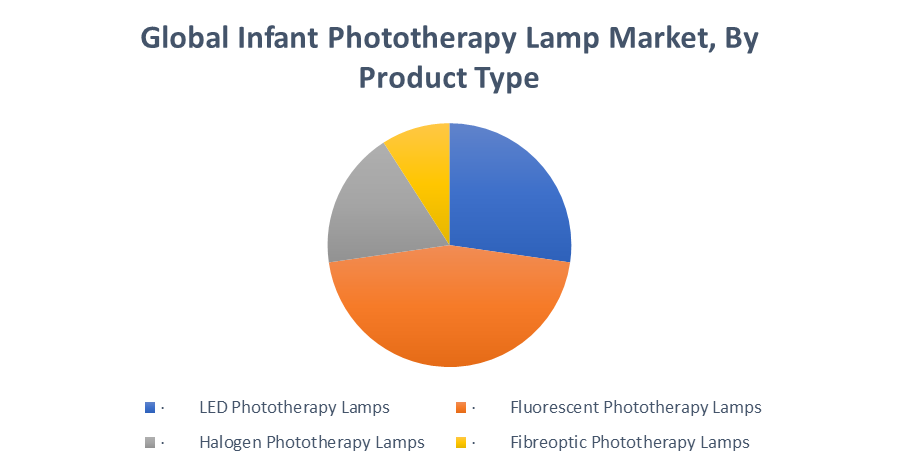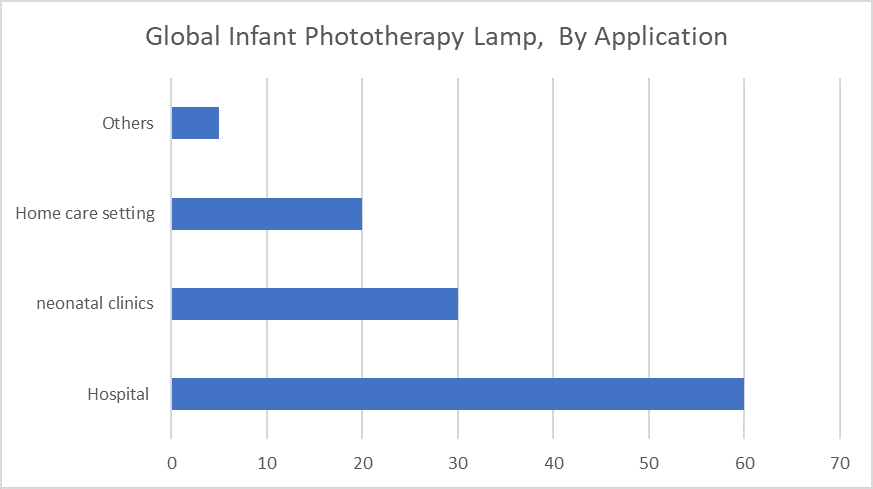Global Infant Phototherapy Lamp Market
Global Infant Phototherapy Lamp Market Size, Share, and COVID-19 Impact Analysis, By Product Type (LED Phototherapy Lamps, Fluorescent Phototherapy Lamps, Halogen Phototherapy Lamps, and Fibreoptic Phototherapy Lamps), By Application (Hospitals, Neonatal Clinics, Home Care Settings, and Others), and By Region (North America, Europe, Asia-Pacific, Latin America, Middle East, and Africa), Analysis and Forecast 2025 - 2035
Report Overview
Table of Contents
Global Infant Phototherapy Lamp Market Insights Forecasts to 2035
- The Global Infant Phototherapy Lamp Market Size Was Estimated at USD 533.1 Million in 2024
- The Market Size is Expected to Grow at a CAGR of around 6.27% from 2025 to 2035
- The Worldwide Infant Phototherapy Lamp Market Size is Expected to Reach USD 1041.2 Million by 2035
- Asia Pacific is expected to grow the fastest during the forecast period.

Infant Phototherapy Lamp Market
Infant phototherapy lamps are medical equipment used to treat newborn jaundice, usually due to high bilirubin levels, by highlighting newborns to specific light wavelengths that help to break bilirubin for emissions. These devices come in various forms, including mobile units and fixed installations, and use various light sources such as fluorescent lamps, LEDs, quartz halogen, or gas discharge tubes. Increasing incidence of newborn jaundice, newborn population growing population, technological progress in light sources (especially LEDs), and more and more healthcare infrastructure are demanding this phototherapy equipment at the global level.
Attractive Opportunities in the Infant Phototherapy Lamp Market
- Infant phototherapy lamp is to adopt rapidly of LED-based phototherapy systems. Compared to traditional fluorescent lamps, LED lamps provide prolonged lifetime, low energy consumption, and treatment accuracy for newborn jaundice. Hospitals and newborn intensive care units are rapidly switching to LED-based systems to increase security, reduce the cost of maintenance, reduce the cost of maintenance, and ensure continuous treatment.
- Increasing demand for portable and mobile phototherapy units. These devices allow treatment at the Bedside or remote rural health care centers where access to the infrastructure of a full hospital may be limited. Mobile units are gaining popularity in the berthing centers and under-releasing hospitals, especially in parts of Asia, Africa, and Latin America.
- Increased attention to smart phototherapy solutions equipped with monitoring systems, real-time response, and digital integration. The device that can track bilirubin levels is being rapidly adopted in modern newborn wards to alert doctors to long treatment times and therapy. As healthcare systems expand digital infrastructure, smart phototherapy lamps will receive traction between both public hospitals and private pediatric care providers, who are looking to improve the results and reduce clinical errors.
Global Infant Phototherapy Lamp Market Dynamics
DRIVER: Rising Incidence of Neonatal Jaundice
The infant phototherapy lamp market is a growing global phenomenon of newborn jaundice, which affects about 60 percent of the full newborns and 80 percent of preterm newborns. The condition requires immediate treatment to prevent complications such as the colony or brain damage. Hospitals and paediatric units are giving priority to early diagnosis and treatment worldwide, leading to maximum adoption of phototherapy lamps. Progress in medical awareness, better access to newborn care, and the birth rate hike in hospitals, especially in emerging markets, are promoting the demand for effective phototherapy equipment.
RESTRAINT: High Equipment Costs in Low-Resource Settings
High cost of advanced phototherapy devices, especially LEDs and smart monitoring systems. Many healthcare providers in low and middle-income countries still rely on the old or re-use fluorescent models due to a lack of budget. This challenge is complicated by a reliable power supply in rural hospitals and limited access to trained personnel, which prohibits the adoption of new phototherapy technologies. As a result, similar access to modern newborn treatment remains a significant obstacle in global health care distribution.
OPPORTUNITY: Growth of Portable and Home-Based Phototherapy Devices
Increasing demand for portable and home-use baby phototherapy lamps. With the increasing preference for early discharge and decentralized healthcare distribution, interest in light, mobile, and battery-powered equipment which can be used outside traditional hospital settings. The manufacturer with the birthplace, homecare providers, and targeted compacts in remote clinics, user-friendly models, is well deployed to catch this emerging demand. The opportunity is particularly relevant in Asia-Pacific and Africa, where the use of hospitals in many areas is limited.
CHALLENGES: Regulatory Approval and Quality Compliance Issues
An important challenge for manufacturers is navigating a strict regulatory structure and ensuring product safety in diverse markets. Medical equipment rules for newborn care vary from country the country, often leading to delayed approval and complex compliance processes. The lack of consistent quality standards and harmonious clinical guidelines also affects the entry of new phototherapy products in emerging markets. Companies should invest in certification, clinical verification, and local training to remove these obstacles and ensure widespread adoption of their products.
Global Infant Phototherapy Lamp Market Ecosystem Analysis
Infant phototherapy lamps operate through a connected ecosystem with market manufacturers, healthcare providers, regulatory bodies, distributors, and non-governmental organizations. Medical equipment companies such as GE Healthcare, Natas Medical, Atom Medical, and AVI Healthcare lead innovation are used in hospitals and newborn care centers in traditional and LED-based phototherapy systems. These manufacturers collaborate with newborns and pediatric experts to improve the safety, accuracy, and purpose of equipment. US regulatory officers, such as the FDA, CE in Europe, and country-specific agencies, ensure the quality and safety of the device through harsh approval standards. Distributors and medical supply chains play an important role in distributing equipment in hospitals, birth centers, and rural clinics worldwide.
Based on the product type, the fluorescent phototherapy lamps segment led the market with the leading revenue share over the forecast period

The segment dominance is driven because these technologies are widely available and reasonably priced in both public and commercial hospitals, and they have been the norm for newborn care for decades. Even if LED-based systems are becoming more and more popular, fluorescent lights are still the main treatment option in many underdeveloped nations due to financial limitations and restricted access to cutting-edge technology.
Based on the application, the hospital segment led the market with the major revenue share during the forecast period

The hospital segment led the market, holding the largest revenue share during the forecast period. The high hospital birth rates and the accessibility of neonatal intensive care units (NICUs) for prompt medical attention. As part of standard neonatal jaundice management procedures, phototherapy lights are installed in the majority of public and private hospitals. Hospitals are the ideal location for both initial diagnosis and treatment because of their superior infrastructure, skilled medical personnel, and increased patient volumes.
North America is anticipated to hold the largest market share of the infant phototherapy lamp market during the forecast period
North America is anticipated to hold the largest market share in the infant phototherapy lamp market during the forecast period. It's an advanced healthcare infrastructure, high healthcare expenses, and innovative medical equipment. Availability of a wide range of major market players and a wide range of phototherapy solutions supports market growth in the region. High proliferation of newborn jaundice and emphasis on early diagnosis and treatment contribute to the strong demand for phototherapy lamps in North America.
Asia Pacific is expected to grow at the fastest CAGR in the infant phototherapy lamp market during the forecast period
Asia Pacific is expected to grow at the fastest CAGR in the infant phototherapy lamp market during the forecast period. Government initiatives are increasing to improve large population base, rising health care awareness, and newborn care. Countries like India and China are focusing on increasing their health care systems, including newborn care facilities. The expansion of newborn clinics and special care centers supports market growth in the region, in association with advanced phototherapy technologies. The increasing awareness about the increasing prevalence of preterm births and the importance of timely treatment for newborn jaundice leads to the demand for phototherapy lamps in the Asia Pacific region.
Recent Development
- In October 2023, Philips Healthcare launched an advanced LED-based neonatal phototherapy device with integrated real-time irradiance monitoring. This new system enhances treatment safety and effectiveness by automatically adjusting light levels while delivering consistent bilirubin reduction, reflecting a shift toward smarter neonatal care solutions.
KEY PLAYERS IN THE INFANT PHOTOTHERAPY LAMP MARKET INCLUDE
- GE Healthcare
- Philips Lighting Holding B.V.
- Natus Medical Incorporated
- Drägerwerk AG & Co. KGaA
- Atom Medical Corporation
- Nice Neotech Medical Systems Pvt. Ltd.
- Phoenix Medical Systems Pvt. Ltd.
- Herbert Waldmann GmbH & Co. KG
- Medela AG
- Fanem Ltd.
- Weyer GmbH
- Zhengzhou Dison Instrument And Meter Co., Ltd.
- Ibis Medical Equipment & Systems Pvt. Ltd.
- Olidef Medical
- Advanced Instrumentations Inc.
- Others
Market Segment
This study forecasts revenue at global, regional, and country levels from 2020 to 2035. Spherical Insights has segmented the infant phototherapy lamp market based on the below-mentioned segments:
Global Infant Phototherapy Lamp Market, By Product Type
- LED Phototherapy Lamps
- Fluorescent Phototherapy Lamps
- Halogen Phototherapy Lamps
- Fibreoptic Phototherapy Lamps
Global Infant Phototherapy Lamp Market, By Application
- Hospitals
- Neonatal Clinics
- Home Care Settings
- Other
Global Infant Phototherapy Lamp Market, By Regional Analysis
- North America
- US
- Canada
- Mexico
- Europe
- Germany
- UK
- France
- Italy
- Spain
- Russia
- Rest of Europe
- Asia Pacific
- China
- Japan
- India
- South Korea
- Australia
- Rest of Asia Pacific
- South America
- Brazil
- Argentina
- Rest of South America
- Middle East & Africa
- UAE
- Saudi Arabia
- Qatar
- South Africa
- Rest of the Middle East & Africa
Check Licence
Choose the plan that fits you best: Single User, Multi-User, or Enterprise solutions tailored for your needs.
We Have You Covered
- 24/7 Analyst Support
- Clients Across the Globe
- Tailored Insights
- Technology Tracking
- Competitive Intelligence
- Custom Research
- Syndicated Market Studies
- Market Overview
- Market Segmentation
- Growth Drivers
- Market Opportunities
- Regulatory Insights
- Innovation & Sustainability
Report Details
| Pages | 160 |
| Delivery | PDF & Excel via Email |
| Language | English |
| Release | Sep 2025 |
| Access | Download from this page |
